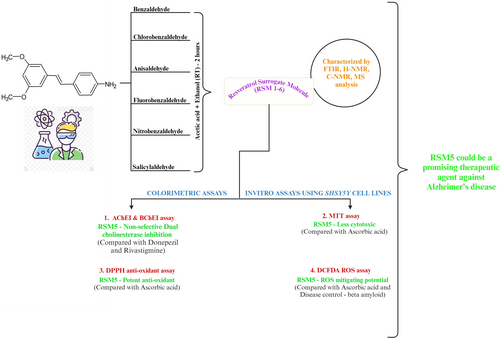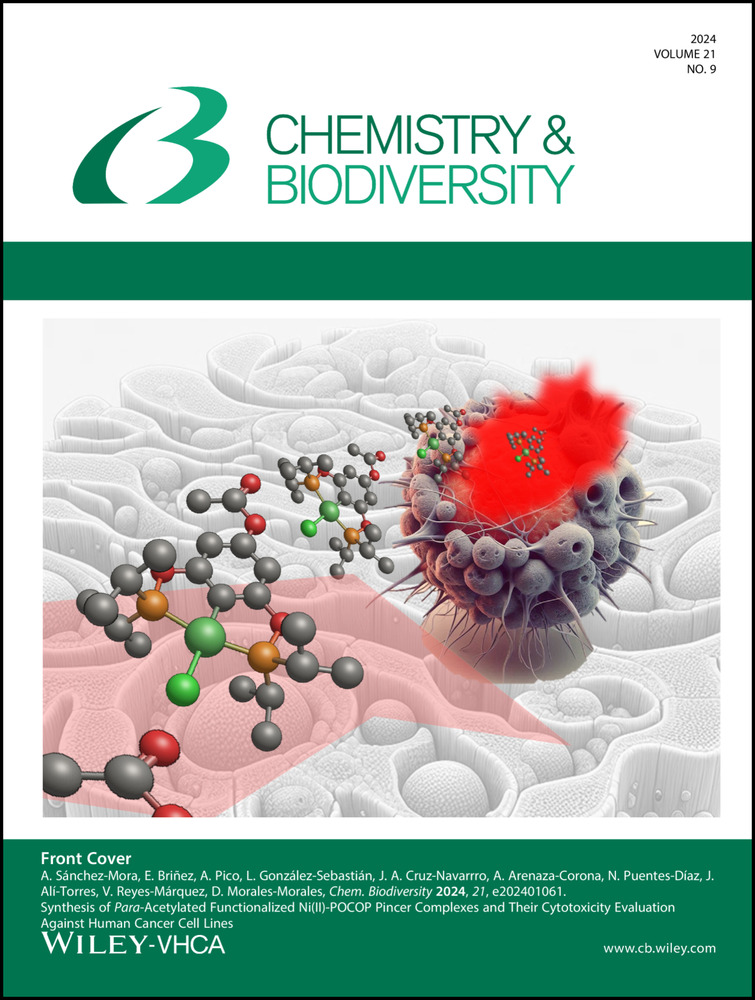Design, Synthesis, and Invitro Pharmacological Evaluation of Novel Resveratrol Surrogate Molecules against Alzheimer's Disease
Abstract
A series of resveratrol surrogate molecules were designed, synthesized and biologically evaluated for inhibition of acetylcholinesterase (AChE) and butyrylcholinesterase (BChE) along with anti-oxidant activity as potential novel multifunctional agents against Alzheimer's disease (AD). Six novel compounds were synthesized by reacting (E)-4-(3,5-Dimethoxystyryl) aniline with benzaldehyde and some selected derivatives of benzaldehyde in the presence of ethanol and a few drops of glacial acetic acid which followed the general scheme involved in the formation of Schiff bases. The spectral analysis data including FT-IR, 1H-NMR, 13C-NMR, and Mass spectroscopy results were found to be in good agreement with the newly synthesized compounds (Resveratrol Surrogate Molecules 1–6). The synthesized compounds were evaluated for their dual cholinesterase inhibitory activities, cytotoxic effect, and anti-oxidant potential. The results showed that compound RSM5 showed potent inhibitory activity against AChE and BChE. In, addition the cytotoxicity of the compound RSM5 is less and found to be within the desirable limit indicating the potential safety of RSM5. Also, it possesses substantial anti-oxidant activity which qualifies RSM5 as an anti-AD agent. Taken together, these findings demonstrate that the molecule RSM5 had the most multifunctional properties and could be a promising lead molecule for the future development of drugs for Alzheimer's treatments.
Graphical Abstract
Conflict of Interests
The authors declare no conflict of interest.
Open Research
Data Availability Statement
The data that support the findings of this study are available in the supplementary material of this article.





